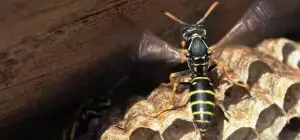When you think of rats, you might first think of cities and sewers. They tend to be a common sight in many urban and suburban areas, but it’s good to be aware these rodents live in Florida too — and they come with their own set of challenges.
From health risks to property damage, the presence of rats can create significant issues for homeowners. That’s why we’ve created this guide for Sunshine State residents to explore the types of rats found in Florida, their prevalence, the risks they pose and effective methods for removal and prevention.
Are There Rats in Florida?
Yes, rats are found in Florida. The state’s warm climate and abundant food sources create an ideal environment for various species of rats to thrive. Whether you live in a busier city or a quiet suburban neighborhood, the likelihood of encountering rats is high.
How Common are rats in florida?
Rats are considered common pests across Florida. They often invade residential areas in search of food, shelter and nesting sites. Their adaptability allows them to survive in a range of environmental conditions, making them a frequent nuisance for homeowners.

How many Rats are in Florida?
Estimating the exact number of rats in Florida is certainly not an exact science, but studies suggest that rat populations can explode rapidly if not managed. A single pair of rats can produce a staggering number of offspring — up to 60 per year — under ideal conditions.
What kind of rats are in florida?
Florida is home to several species of rats, but the most common include:
- Roof Rats: Known for their climbing abilities, roof rats are often found in attics and trees. They have slender bodies and can grow to about 6 to 8 inches long, excluding the tail.
- Norway Rats: These larger rats are typically found in burrows and basements. They can reach lengths of up to 10 inches and are characterized by their muscular bodies and blunt snouts.
- Palm Rats: A subtype of roof rats, palm rats prefer palm trees and are often found in coastal areas. They share similar traits with roof rats, including size and behavior.
- Fruit Rats: Another name for certain types of roof rats, these rodents are attracted to fruit-bearing trees and will often be found in gardens.

The Risks and impacts of rats
Rats are not just a nuisance — they can pose significant health and safety risks.
Why are Rats Bad?
- Health Problems: Rats can transmit diseases through their droppings, urine, and saliva. Common diseases associated with rats include
- Leptospirosis: Spread through contaminated water or food, this bacterial infection can cause severe illness.
- Hantavirus: Primarily transmitted through inhalation of dust contaminated with rodent droppings, this virus can lead to serious respiratory issues.
- Salmonella: Rats can contaminate food with this bacteria, leading to gastrointestinal illness.
- Property Damage: Rats are experts at gnawing through wires, insulation and structural components of buildings. This not only leads to costly repairs but can also create fire hazards
- Contamination: Their droppings and urine can contaminate food sources and surfaces, making it critical to manage infestations quickly.
Identifying Rats in your home
Before jumping into action, you’ll first need to confirm whether or not you actually have a rat problem. Here are some signs to look out for:
Signs of rat Infestation
- Droppings: Rat droppings are dark and cylindrical, resembling a grain of rice
- Gnaw Marks: Look for gnawed furniture, wires or food packaging.
- Nests: Rats build nests from soft materials like paper and insulation, often found in secluded or hidden areas.
- Noises: Scratching sounds in walls or ceilings, especially at night, can indicate rodent activity.

Finding Entry Points
Rats can squeeze through remarkably small openings — about ½ inch. Inspect your home for cracks, gaps around doors and windows and areas where pipes enter.
How to get rid of rats in Florida
Once you’ve confirmed a rat infestation, it’s time to make a plan. Here are some strategies for removal:
DIY Methods
- Traps: Snap traps and electronic traps can effectively catch rats. Place them along walls and areas where you’ve noticed the most activity.
- Bait Stations: Poison bait can be effective, but it should be used with caution, especially in homes with children or pets.
- Exclusion: Seal all potential entry points with materials like steel wool or caulk to prevent further access.
Professional Services
If the infestation is severe or you’re uncomfortable handling it yourself, you should consider hiring a pest control professional. They can provide comprehensive solutions, including:
- Inspection: A thorough assessment to identify all entry points and signs of infestation.
- Exclusion: Proper sealing of entry points to prevent future infestations.
- Long-Term Prevention: Ongoing monitoring and preventive measures tailored to your property and your needs.

Specific Rat Species in Florida
Understanding the specific types of rats you’re dealing with can help in addressing infestations effectively.
Roof Rats
Roof rats are particularly problematic in Florida due to their climbing abilities. They are often found in trees and attics. Here’s how to manage them:
- Bait and Traps: Use snap traps and bait stations specifically designed for roof rats.
- Eliminate Food Sources: Make sure food is stored in airtight containers and remove pet food or birdseed from outdoor areas.
Palm Rats
Similar to roof rats, palm rats prefer to nest in palm trees. To get rid of palm rats:
- Trim Trees: Keep palm trees well-trimmed and remove any fruit that falls to the ground.
- Set Traps: Place traps near their nesting areas and any signs of activity.
Fruit Rats
These rats are drawn to fruit trees and gardens. To deter fruit rats:
- Harvest Regularly: Collect ripe fruits from trees right away to minimize food sources.
- Trap Effectively: Set traps near fruit-bearing trees to catch them before they can invade your home.
Preventing Future Infestations
Prevention is key to keeping your home rat-free. Here are some tips:
Exclusion Techniques
- Seal Entry Points: Regularly inspect and seal cracks and gaps in your home’s foundation, walls and around utilities.
- Maintain Landscaping: Keep shrubs and trees trimmed and away from your home, reducing nesting opportunities.
Food Storage
- Proper Storage: Store food in airtight containers and keep kitchens and dining areas clean.
- Secure Garbage: Ensure garbage bins have tight-fitting lids and dispose of waste regularly.
Regular Inspections
Conduct routine inspections of your property for signs of rats, and take immediate action if you notice any.
Rats in Florida can be the source of real health risks and can cause considerable property damage. By understanding the types of rats in your area, recognizing the signs of infestation and implementing targeted removal and prevention strategies, you can protect your home and family.
If you suspect a rat problem or want to be positive your home remains pest-free, don’t hesitate to reach out to a professional pest control service for assistance. Keeping your home rat-free requires vigilance and action, but with the right approach, you can get it done

